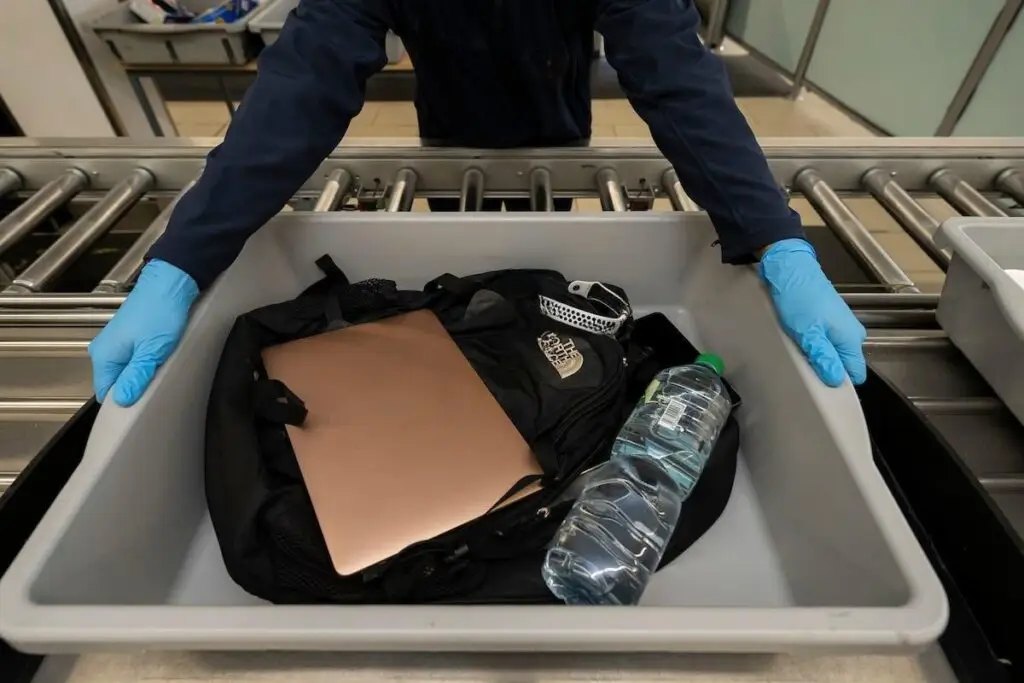Changes to the airport security rules for liquids are on the horizon, with a return to the 100ml limit. What does this mean for travellers?
For many airline passengers, going through airport security is often cited as the most stressful part of a journey. The restrictions on liquids, aerosols and gels (LAGs) and the removal of electronics from bags are commonly resented.
Introduction
Changes to the airport security rules for liquids are on the horizon, with a return to the 100ml limit. What does this mean for travellers?
For many airline passengers, going through airport security is often cited as the most stressful part of a journey. The restrictions on liquids, aerosols and gels (LAGs) and the removal of electronics from bags are commonly resented.
The History of Liquid Restrictions
The stringent liquid rules were introduced globally in 2006 following a foiled terror plot aiming to detonate explosives on transatlantic flights. Initially intended as a temporary measure, the regulations have endured for years. Despite various promises to ease the rules, they remain firmly in place.
The rules were notably described as a ‘temporary measure.’ Even buying drinks at the airport to take onboard has been a challenge. Passengers are frequently caught out, losing airport purchases because duty-free drinks can’t always pass through security at connecting airports.
Government Promises and Delays
Several political initiatives aimed at easing these restrictions have fallen short. Boris Johnson promised changes by 2022, a deadline that was then moved to June 2024 under Rishi Sunak’s administration. However, most major UK airports failed to meet this new target.
Transport Secretary Mark Harper extended the deadline for airports but also warned of potential fines for delays. Although advanced CT scanners are being installed at UK airports, the pace of implementation has been slow. UK’s key airports, including Heathrow, Gatwick, Manchester, and Stansted, were not ready in time.
Why the Delay?
Airports have cited various reasons for delays, including the volume of work required. For instance, Heathrow airport needed to replace 146 lanes, unlike smaller airports which had significantly fewer lanes to update.
Additionally, the COVID-19 pandemic caused catastrophic losses, further delaying these installations. Financial constraints and logistical challenges led to missed deadlines. Transport Secretary Mark Harper acknowledged these issues and extended the deadline to 2024.
New Technology and Its Advantages
The implementation of advanced CT scanners could transform airport security. These scanners use computed tomography (CT) technology, offering high-level threat detection and three-dimensional imaging of luggage contents.
The machines can even analyse electronics, reducing the need to remove them from bags. With these advancements, security checks become smoother and less stressful for passengers. The time saved on secondary searches allows officers to focus on assessing passenger behaviour.
Implementation Success Stories
Some UK airports have successfully implemented the new technology, meeting the 2024 deadline. Airports like Aberdeen, Newcastle, Teesside, Leeds Bradford, Birmingham, Southend, and London City have adopted this new system.
These airports initially saw the new scanners as a competitive advantage, allowing liquids up to two litres to be carried on board. However, the Department for Transport later reinstated the 100ml liquid limit. Passengers can still keep liquids in their hand luggage, but only if the containers are 100ml or less.
Operational Challenges
Airports that implemented the new technology faced technical challenges. Some scanners incorrectly flagged benign liquids as high threats, leading to delays. A spokesperson from the Department for Transport indicated that updating the systems was necessary to resolve these issues.
Despite these setbacks, the long-term goal remains to enhance security and improve the passenger experience. Mark Harper emphasised the commitment to maintaining world-leading security standards, even if the process involves temporary reintroductions of old measures.
Passenger Confusion and Global Norms
The introduction of new technology has created confusion among passengers. With some UK airports operating under old rules and others under new ones, passengers often face uncertainty.
Internationally, the situation is equally diverse. Different countries have varied security measures, adding to the confusion. The European Union has also reverted to older rules, making it challenging for passengers to keep track of requirements.
Financial Implications
Investing in this advanced technology is costly, and airports are seeking ways to balance these expenses. There is a possibility of increased fees to offset the investment costs.
Though costly, the long-term benefits of implementing advanced scanners are expected to outweigh the initial expenditure. The scanners aim to reduce queuing times and labour costs, potentially offering savings for both airports and travellers.
Conclusion
In conclusion, while the reintroduction of the 100ml liquid rule might seem like a setback, it is a step towards a smoother and more secure airport experience in the long term.
Passengers must stay informed about the varying rules at different airports and plan accordingly to avoid confusion during their travels.
In conclusion, while the reintroduction of the 100ml liquid rule might seem like a setback, it is a step towards a smoother and more secure airport experience in the long term.
Passengers must stay informed about the varying rules at different airports and plan accordingly to avoid confusion during their travels.


